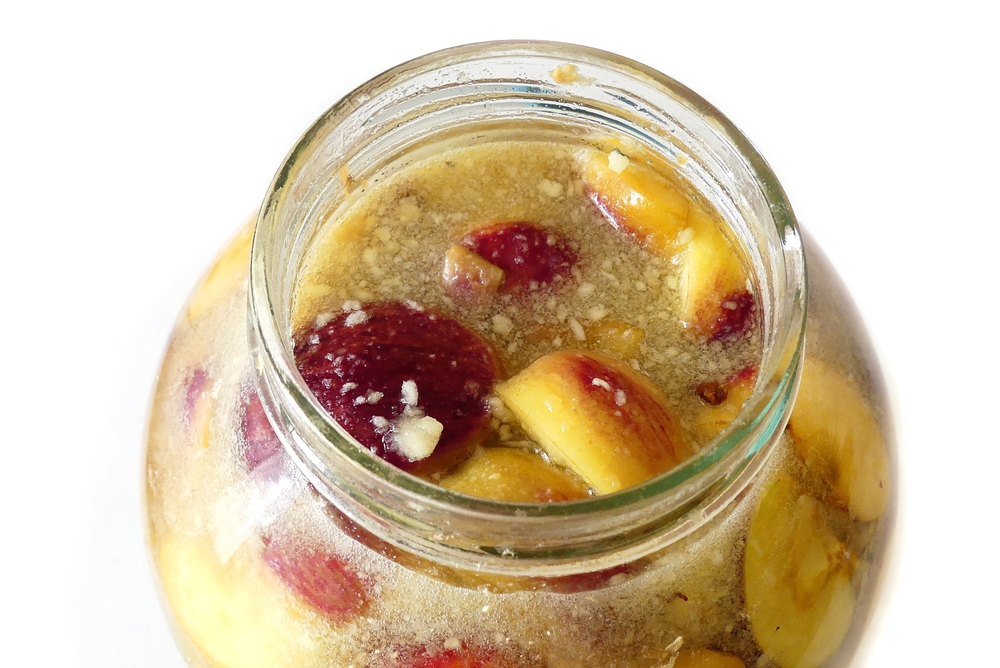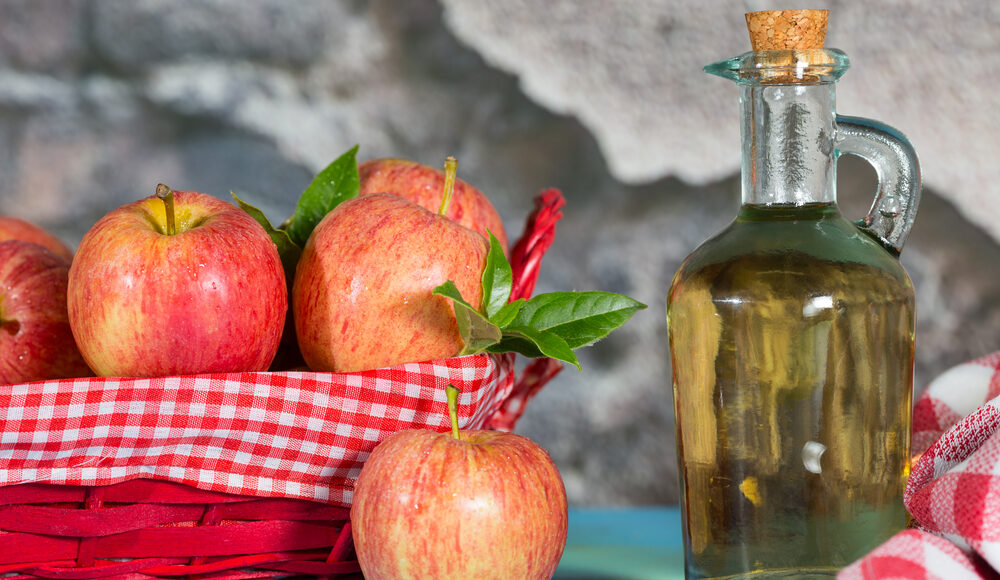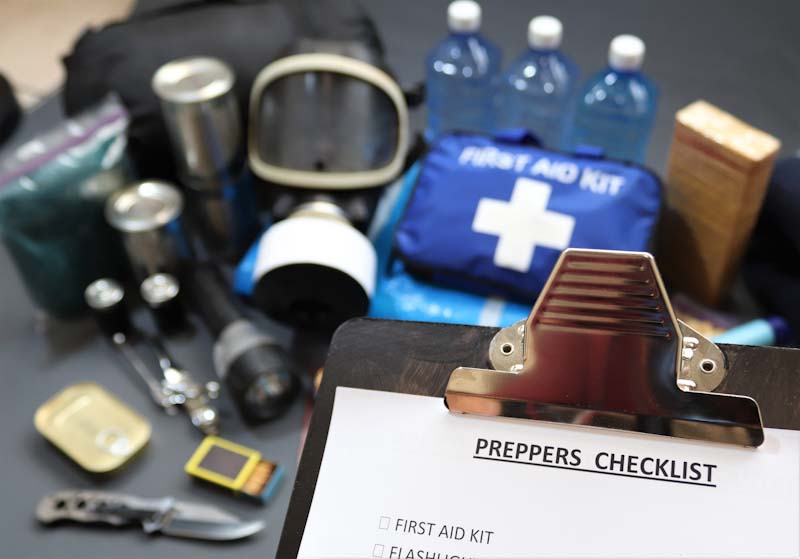Becoming and being frugal is the right way of living for many preppers, and learning how to recycle and reuse stuff is the way to go if you plan to become self-sufficient and independent.
In today’s article, we will cover the topics of reusing kitchen scraps and how to turn these food scraps into one of the world’s oldest condiments, vinegar.
The luxury of wasting food
As a modern society, we have developed the habit of throwing out a lot of food, and we don’t think twice about the amount of waste we produce every year. In fact, it is estimated that each day, one pound of food per person is wasted in the United States.
This means that about 80 billion pounds of food are thrown away each year, and food waste in our country is projected at between 30-40 percent of the food supply. Other countries don’t have the same luxury, and they have strong politics regarding food waste and how the food reaching its expiration date should be reused.
However, it wasn’t always like this for Americans, and throughout history, most of our ancestors did not have the luxury of letting anything go to waste. Every item, edible or otherwise, was reused and recycled to obtain various benefits and exploit it to its full potential.
For people back then, forgetting about food or tossing away any part of food items wasn’t an option. Even the parts that they couldn’t reuse were turned into compost or used for feeding the animals on their homestead.
Today, with all the efforts to end food waste, there’s still a lot of work to do, not only on the field, in factories and restaurants, but also in your own kitchen. Making your own vinegar, the world’s oldest and most flavorful condiment is one of such methods you could implement to reduce food waste.
Making your own vinegar
Fermenting your own vinegar gives you the opportunity to save some food scraps that would otherwise go to waste or perhaps in the compost pile. Depending on the ingredients you are using, you can make various types of vinegar, full of antioxidants and phenolics without having to buy expensive vinegars from the grocery store.
Before we move forward, I believe it’s wise to learn and understand the basics of making vinegar. Vinegar is nothing more than acetic acid diluted in water, and the various traces of chemicals and other acids it contains gives it that distinctive flavor and character.
Vinegar is obtained following a two-part fermentation process. The first part of this process is making ethanol, which is done by yeast converting sugars into ethanol anaerobically. Think of the process of making hard cider or wine that then becomes common table vinegar.
In the second stage of fermentation, the ethanol is exposed to air which allows acetic bacteria to enter the liquid and thrive. The acetic bacteria consumes ethanol and converts it into acetic acid.
To make scrap vinegar, you will need to take care of the first stage of fermentation by making some sort of a country wine (adding sugar water to the scraps) which is then converted into vinegar. When making scrap vinegar, the fermentation stages occur simultaneously.
Scrap vinegar – universal recipe

To make scrap vinegar, you can use any fruit scraps you like, and I’ve used scraps such as:
- Green leafy strawberry tops
- Mashed steamed coming from a steam juicer
- The mash remaining after running fruit through a food mill
- Fiber (apples, beets, etc.) coming out after making juice using a juicer
And there are many other options as well, you get the idea.
The skin and bits of fruit are ideal for making scrap vinegar because they provide wild yeast as well as nutrients for the yeast you are using, besides adding flavor to the vinegar.
In case you are using organic scraps like skins and peelings, you can avoid the added yeast, but if you use non-organic scraps, you should add yeast. In the recipe below, I’ve included the steps for adding yeast, just to be on the safe side.
Making scrap vinegar – Step-by-step guide
Ingredients needed:
- ½ to 1 lb. fruit/vegetable skins, leftover mash, cores, or anything left from food processing and preparation using fruits or vegetables
- 6 tbsp. of sugar (of any kind)
- 1 ½ quart of boiled, unchlorinated water
- ½ pack wine yeast hydrated in ¼ cup unchlorinated water
- ¾ raw cup, unfiltered vinegar starter or a vinegar mother
Yield: about 2 quarts.
Directions
1. Take a clean half-gallon jar and place the fruit/vegetable scraps and sugar in it. Stir in 1 quart of the boiled water. Stir for a few minutes, and then use the remaining water to fill the jar up to the neck.
2. Hydrate the yeast by sprinkling it over the water, stirring gently. Let it sit for 15-20 minutes.
3. When the mixture cools (ideally to room temperature), you can add the vinegar starter and stir well with a wooden spoon. Stirring allows oxygen to find its way into the mix.
4. You will need to make sure the fruit/vegetable scraps stay submerged, so you will need to use something like fermentation weights to keep the scraps submerged. If the scraps aren’t submerged, they can become a host for undesirable bacteria.
5. Cover the jar with a piece of cotton (tightly woven cheesecloth or butter muslin) and secure with a rubber band or string. You can also screw the ring from the jar over the piece of cotton. This step is required to keep the fruit flies out.
6. Place the jar on your counter or in a spot where the temperature is 75 to 86 degrees Fahrenheit.
7. Using a wooden spoon, stir once a day for the first six days. Afterward, you could stir every 2-3 days if you remember. You will start to see bubbles, and that’s a good sign.
8. The fermentation process will begin to slow down in about two weeks. After this period, you will need to remove the fruit/vegetable scraps
9. Once you remove the cotton cover, you may see a film developing on top. That’s the beginning of the vinegar mother, and you need to remove and set it aside.
10. Remove the scraps and then transfer the vinegar (or almost vinegar) and the vinegar mother (if one formed) into a clean jar. Cover again as you did for the first jar, using a cotton cover.
11. Check the vinegar in a month, and it should have a nice acidity. It usually takes another month or two to fully develop. Make sure you test the pH of the vinegar. It should be 4.0 or below.
12. Bottle the finished vinegar and save the mother of vinegar for your next batch.
Concluding
As you can see, making vinegar from fruit and vegetable scraps is quite easy. The only thing that may seem a problem for some in the entire process described in this article is gathering the amount of fruit/vegetable scraps needed for this recipe.
However, you can collect the scraps you have and store them in the freezer until you have enough for a batch of scrap vinegar. Use what fruit/vegetable scraps you can gather, and I advise you to combine ingredients that seem like they’d taste good together.










Gene Deal | August 9, 2022
|
Several recipe ingredient amounts were left out!